Timberlands are both stylish and tough. The Timberland style has become popular recently, and the brand is now somewhat iconic and desirable.
The reality is that with the fashion statement comes the task of breaking in your Timberlands. This is a challenging task but having my tips and hacks at hand will help you step out in rugged style sooner.
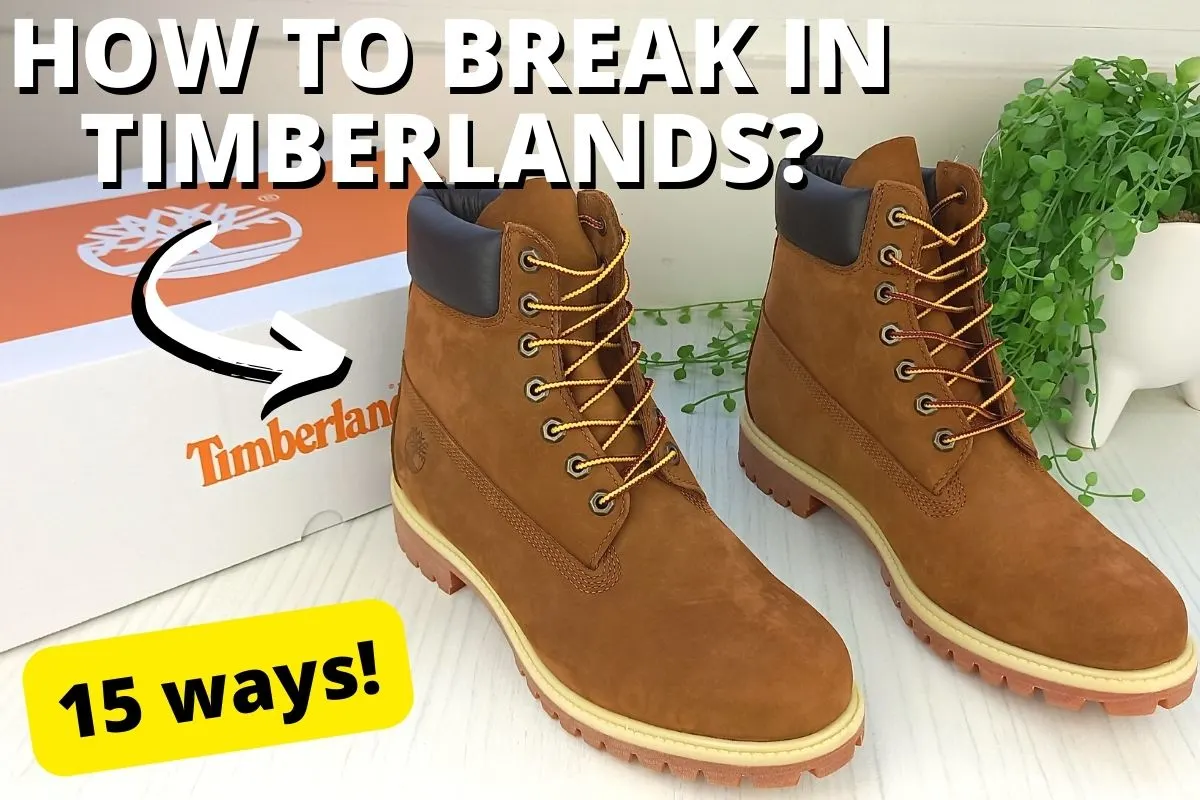
Break your Timberlands in by wearing them in your home, treating them with oil, and pinching and twisting them. Freeze your shoes or heat them. Use damp newspaper or towels to stretch them. The most effective solution is to move around in them as often as possible but do it slowly.
Your new shoes will last longer if you care for them; you must also take care of your feet. Knowing the best ways to wear to break in your shoes and protect your feet simultaneously requires a patient approach.
I’m a long term fan of the Timberland brand and I have accumulated plenty of tips for breaking in their boots. Here are 15 easy ways you can try at home…
Break Your Timberlands in Slowly
The chunky Timberland boot and shoe range are made from either full-hide leather or nubuck leather. Leather, although bendable, takes time to break in. Given that your Timberlands are built for strength and stability, they could take a while to fit your feet comfortably. Fortunately, there are many ways to speed up the process.
Most importantly, avoid being tempted to buy your shoes a size larger just for initial comfortable wearing. Leather stretches, and your Timberlands will be much too big for you after a while.
Shoes that are too big become more uncomfortable as you wear them. They tend to rub because your feet are slipping up and down. You won’t have sufficient foot support, and your feet will move from side to side increasing your chance of foot or ankle injury.
You may also like: Do Timberlands Run Big? (Sizing Chart & PHOTOS)
Option 1: Wear Your Timberlands at Home
Your best bet to break your shoes in is to wear your Timberlands around the home for at least 20 minutes a day. Wear your boots with thick socks, or even double up on socks. This stretches your shoes and protects your feet from blisters and rubbing. Wear a pair of cushioned socks to make the breaking-in process less painful.
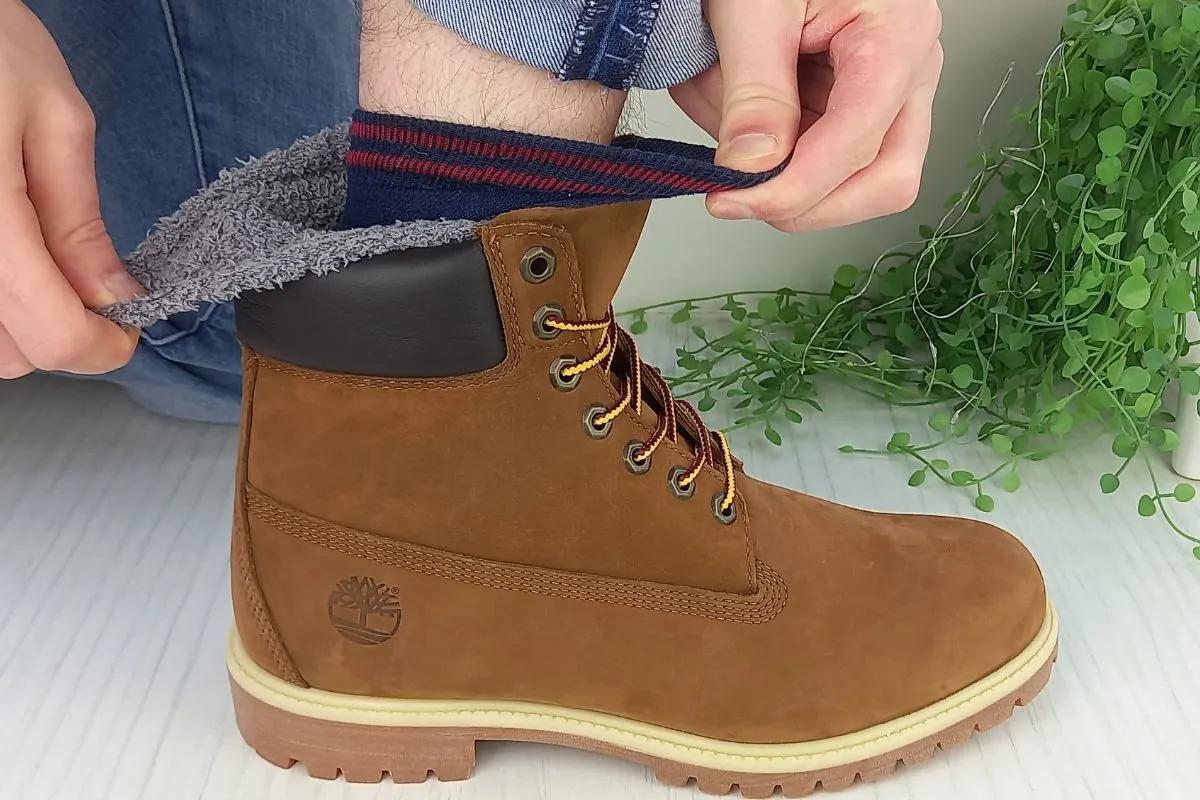
The best part about wearing your shoes at home is that you feel the pain points in the comfort of your home and not while you are out and about. Limping around in brand-new shoes is no fun.
It takes, on average, between 80 and 100 hours to break in a pair of boots or heavy work shoes. Please don’t rush the process; take it slowly. Your feet will thank you for this.
To prevent the shoe’s collar from irritating the upper part of your foot, wear socks that stick out above your shoe. If you are wearing Timberland boots, it is a must to wear long socks as the high tops will undoubtedly cause friction.
Option 2: Use Heat to Stretch Your Timberlands
A hairdryer works wonders for softening leather. If you want the process to go quicker, use heat to make your shoes supple. This warms the leather and molds to your feet when it cools down. Wear your boots and heat them up with a hairdryer on the lowest heat setting. Do this several times to get the desired suppleness and stretch in your new Timberlands.
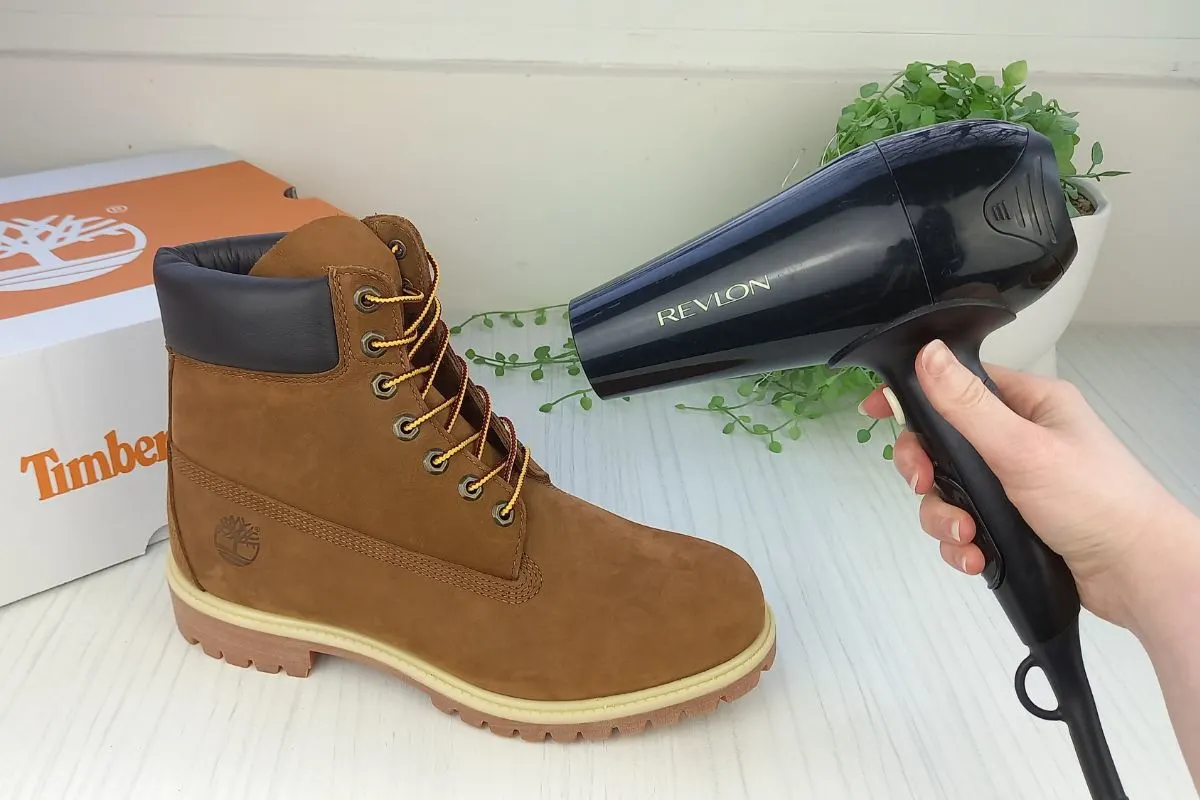
Leaving your shoes out or sitting in the sun while you wear them adds some extra heat but nowhere near the heat from a hairdryer.
Option 3: Use a Leather Conditioner to Soften Your New Boots
Leather conditioners are great at softening leather shoes and making the leather supple. Apply leather conditioner and walk around in your new shoes. The softer leather will move with your feet and take the shape of your foot.
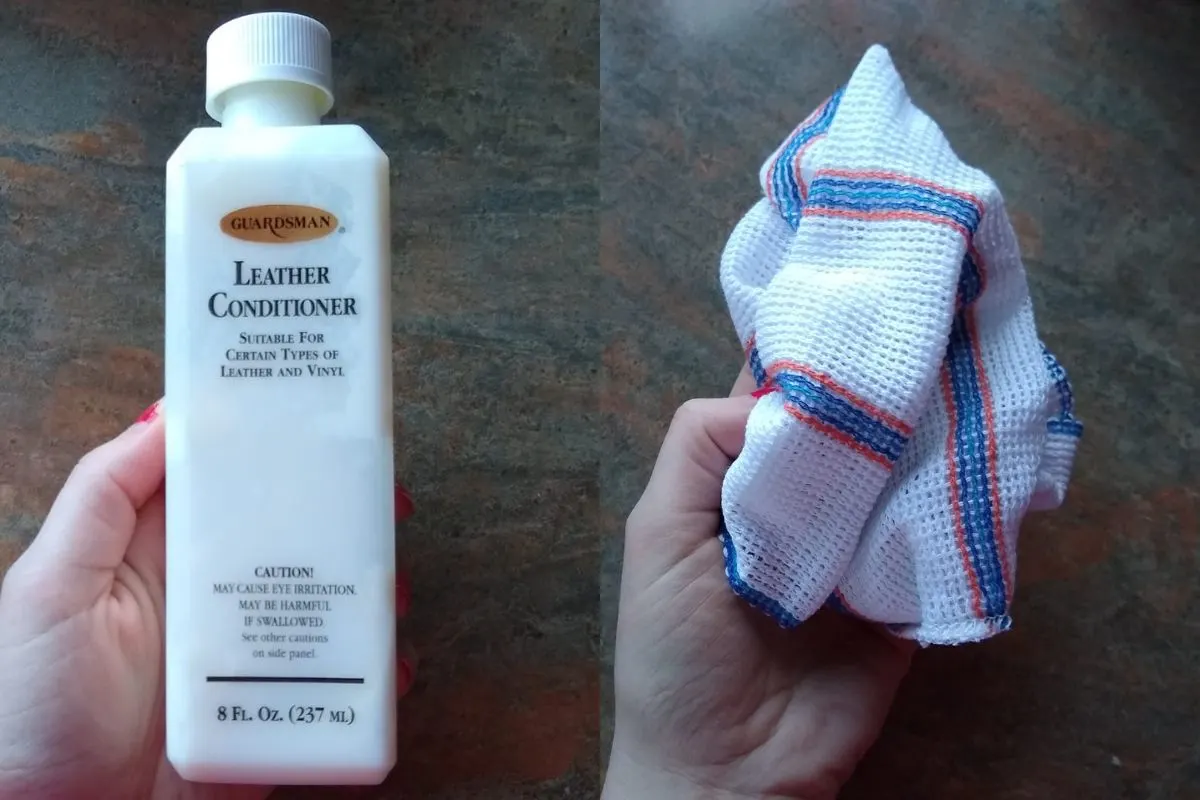
Leather conditioner is an excellent softener with the added benefit of protecting your shoes right from the start.
Option 4: Do Squats and Lunges
Squats and lunges work well for breaking in the entire boot or shoe. They flex your shoe from the front to the sole, the bridge of the shoe, the heel, and even the top of your boots. The added advantage, of course, is the workout your legs get.
Option 5: Freeze Your New Shoes
As unconventional as this may seem, freezing your new Timberlands gives them a good stretch. The principle behind this is that water expands when it turns to ice and then contracts when the ice melts. This process allows your shoes to stretch well, making them looser after a freeze.
To freeze your shoes, you need to:
- Fill watertight plastic bags with water and seal them properly.
- Place these water-filled bags into your Timberlands.
- Place your Timberlands in plastic packets.
- Freeze your shoes overnight.
- When the water has frozen, remove your shoes from the refrigerator.
- Take out the water bags.
- Try on your newly stretched shoes.
If you don’t achieve the desired results, repeat this process again until your shoes feel comfortable.
Option 6: Move Your Foot Around
Wiggle your foot around in your shoe and rotate your ankle while wearing your Timberlands. Point and flex your toes as well. By doing this, the leather of your shoes becomes more flexible. The real advantage of this is that there is less likelihood of severe blisters and discomfort.
If you are eager to wear your Timberlands out and about, keep them on while eating or watching television. Move your feet around as much as you can and flex and point your foot. It is amazing how much quicker you break your shoes in by doing this.
Option 7: Lace Your Boots Differently
Another nifty idea is to lace your boots up differently while walking around in them. Try skipping eyelets, threading the laces in different patterns, and lacing them on the tongue and the boots. This allows your shoes to move in different ways while stretching them out.
Option 8: Rough Up Your Timberlands
Roughing up your shoes is a highly effective way to make them more pliable. Because Timberlands, particularly full-grain leather ones, are tough and rugged; they need more help when it comes to stretching them out.
Twist and bend your Timberlands and squash the leather. Pay attention to your heels and the area just below your toes. These are generally the pain spots. Roughing up your shoes will not damage them; your boots or shoes will become slightly more malleable with every pinch, crush, or twist.
Option 9: Use Newspaper and Towels
Fill your shoes or boot up with either damp newspaper or damp towels. If you use newspaper, stuff your shoes as full as you can and ensure that the entire inner cavity of your shoe is filled with newspaper.
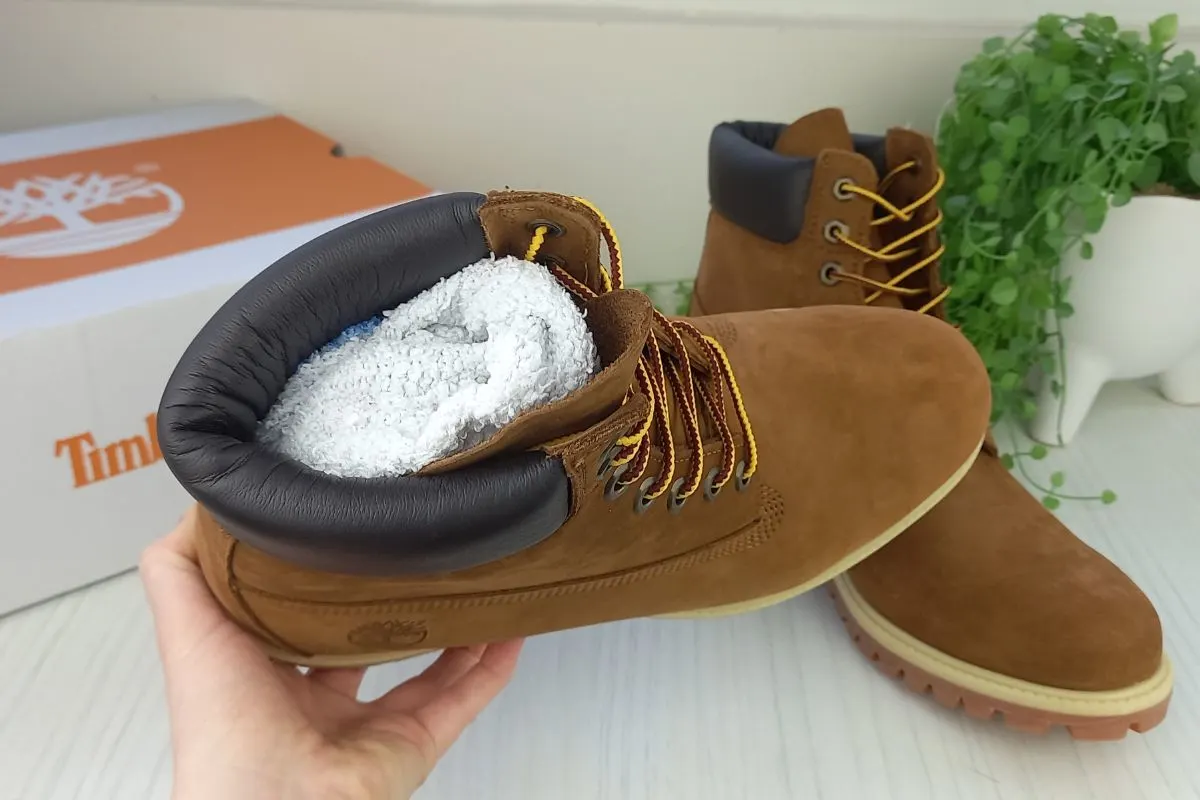
Damp towels work just as well. Moisten four hand towels and put two in each shoe. Leave the damp newspaper or towels in your shoes while you aren’t wearing them.
Option 10: Reach for a Spoon
Use a large metal or wooden spoon; they work just as well. The larger the spoon, the better the stretch will be. This is particularly helpful if you don’t have a shoe stretcher.
The spoon can be used to rub around the inside of your shoes in areas that are particularly rough and hard. Put the spoon into your shoe’s cavity and move it in lever-like movements. Focus on particularly tight areas.
If it is metal, heating the spoon works even better, but you will have to keep reheating it. Take care not to burn yourself in the process.
Option 11: Use a Shoe Stretcher and Spray
Most shoe stores and online shoe stores sell shoe stretchers. Along with your shoe stretcher, try using some shoe stretching spray. This is a highly effective way to stretch your shoes other than wearing them.
Stretching sprays have an alcohol base, so you can’t get water marks on your shoes. Use the stretching spray while you wear your shoes at home. This helps the shoe mold to your feet while you are moving and speeds up the shoe-stretching process.
Option 12: Oil is Useful for Breaking in Shoes
Another option is to use oil to break in shoes. Several types of oil are suitable for leather shoes. However, olive oil and special shoe oil are the best options. Vaseline and wax work well too.
Rub the oil on the tight and abrasive spots on your shoe, massage it, and then wear it before it dries. The oil will soften the shoe and make it more comfortable.
An old trick is to use a waxy soap bar. Put the soap into your shoe and rub it up and down to coat the shoe in soap. Bend and press your shoes or wear them and continue moving your feet around to make the leather pliable.
Option 13: Use Alcohol to Soften Your Timberlands
Put alcohol on a cotton pad and rub it onto the areas that hurt your feet. Do not drench the cotton pad in alcohol. Wear your shoes before the alcohol dries so that the stiff places can mold to your foot.
Option 14: Wet Your Shoes
Dunking your shoes in water and walking around in them stretches them. Unfortunately, the leather on your Timberlands might stain or streak. If you are okay with this, use water; it does help.
Option 15: Enlist Professional Help
Suppose something else is needed to make your Timberlands comfortable. In that case, your best option is to seek professional help either with a cobbler or a podiatrist.
Protect Your Feet While You Break In Your Timberlands
Breaking shoes in is no easy task; there are ways to protect your feet while you do this. If you have worn your shoes several times and they still rub and give you blisters, there are numerous ways to protect your feet. Other than wearing thick socks and sticking plasters onto sore spots, you can:
- Keep your feet dry so that they don’t slip around too much. Use foot deodorant, foot powder, or even normal talcum powder to prevent your feet from sweating during the day.
- Use heel grips or cushions to minimize friction between your foot and your Timberland.
- Vaseline acts as an effective protective barrier between your foot and your shoe.
- Stick duct, sports, and electrical tape to your heel and anywhere the shoe rubs your foot.
Conclusion
Breaking in shoes takes time, particularly with more rugged shoes like the Timberland range. Fortunately, there are various ways in which to break in leather shoes. Heating your Timberlands, freezing them, and twisting them are only a few options. Shoe oil, wet towels, and newspaper are good at stretching your Timberlands.
For more Timberlands content, check out:
Are Timberlands Waterproof? ULTIMATE Guide With Photos
Are Timberlands Good For Snow? Winter Guide (Photos)
Are Timberlands Comfortable? A Design Review (Photos)

Lorna is a footwear geek and the founder of Wearably Weird. She created a YouTube channel in 2021 for fellow footwear fanatics, dedicated to detail-rich footwear reviews and info. She has a fashion media qualification (awarded in 2011).
